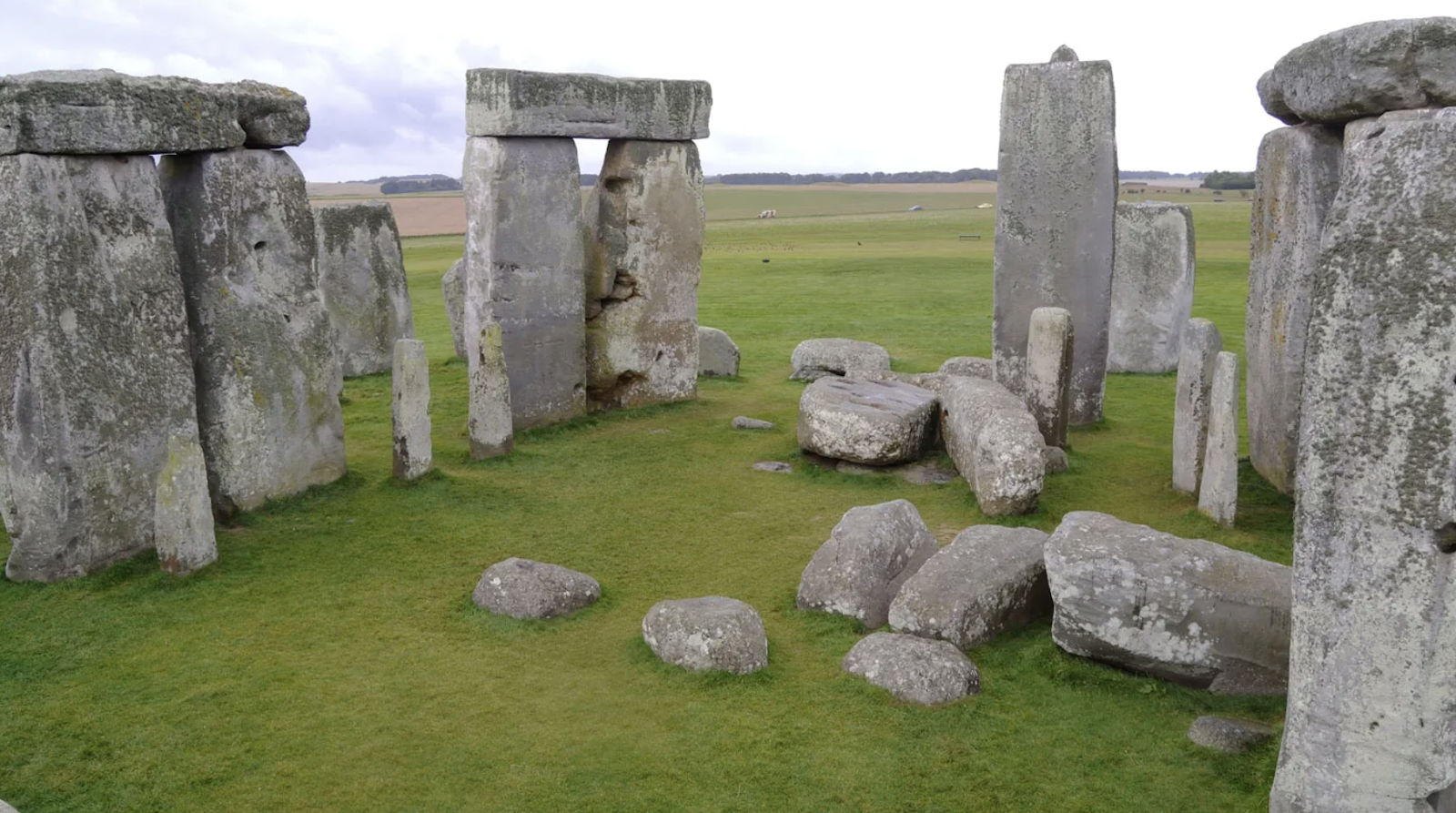What is the Altar Stone, and how did examination of the stone give implications for prehistoric movement of species?
Located in the grasslands of England, a group of rectangular, arch-like structures stand alone in a messy pattern. This is Stonehenge, a popular tourist attraction in the UK with significant historical background. Most importantly, however, there is a hidden scientific explanation behind one particular stone that helped historians understand the origins of one of the new wonders of the world. That stone is the “Altar Stone,” a long rectangular rock that sits on its side, holding millions of years of scientific treasure.
A man sitting next to the stone, showing the immense size and effort needed to transport it by Neolithic Groups.(4)
The Altar Stone is located in the center of the whole attraction, and weighs about six tons (1). According to scientific journals, the stone probably originated in Scotland, which means that whoever brought it down to England carried the stone across 450 miles of grueling weather, more than any of the other stones at Stonehenge (1). Scientists hypothesize that the stone was moved around 4 millennia ago, which has created hypotheses about the advancement of species during prehistoric times (1).
The group of stones at Stonehenge with the Altar Stone sitting horizontally.(5)
When examining the Altar Stone, scientists analyzed mineral grains and their ages from their carbon prints through history. Using the decay of the radioactive elements in the minerals, scientists were able to estimate the age of the stone to be around a couple hundred million to three billion years (3). The sediments in the Altar Stone are binded with baryte, which has high concentrations of Barium, giving more implications of origin movements regarding the stone (2). Scientists revealed that the chemical makeup and age of the mineral grains in the stone matched very closely with another Scottish stone formation, known as the Orcadian Basin (3). This analysis could possibly give scientists information about the connection between migration paths of the prehistoric species, their ways of life, and the movement of the stones.(3).
Using other evidence from the lives of Neolithic species, scientists were able to finally confirm the origins of the Altar Stone. Pottery styles, houses, and diet are among the pieces of evidence indicating that the stones were transported by the Neolithic group from Scotland to Southern England (3). Scientists hypothesize that the stone’s movement was influenced by Neolithic lifestyles, as they have traced the species back to Scotland, suggesting that the group relocated the stones (3). Furthermore, migration paths of these species suggest that throughout time, a pivotal moment caused migration and civilization building towards the south of England, where the stones are located. According to Alasdair Whittle, an archaeologist at Cardiff University in Wales, “This was an age of heroic feats of shared labor, movement and assembly, into which an Altar Stone from northeastern Scotland would perfectly well fit in” (3).
Bibliography
- Bush, E. (2024, August 14). Stonehenge’s central rock came from Scotland, study finds. Retrieved October 3, 2024, from NBC News website: https://www.nbcnews.com/science/science-news/stonehenge-altar-rock-origin-scotland-study-rcna166265
- Pearce, N., & The Conversation. (2024, August 19). Stonehenge Mystery: Scientists Reveal How They Traced The Altar Stone. Retrieved October 3, 2024, from ScienceAlert website: https://www.sciencealert.com/stonehenge-mystery-scientists-reveal-how-they-traced-the-altar-stone
- Stonehenge’s mysterious Altar Stone had roots in Scotland. (2024, August 14). Retrieved October 3, 2024, from Science News website: https://www.sciencenews.org/article/stonehenge-altar-stone-scotland-roots
Images:
- JOHN, B. (2024, October 3). The Altar Stone – where the glacier left it? Retrieved October 3, 2024, from Blogspot.com website: https://brian-mountainman.blogspot.com/2011/11/altar-stone-where-glacier-left-it.html
- Stonehenge’s mysterious Altar Stone had roots in Scotland. (2024, August 14). Retrieved October 3, 2024, from Science News website: https://www.sciencenews.org/article/stonehenge-altar-stone-scotland-roots







Comments are closed.